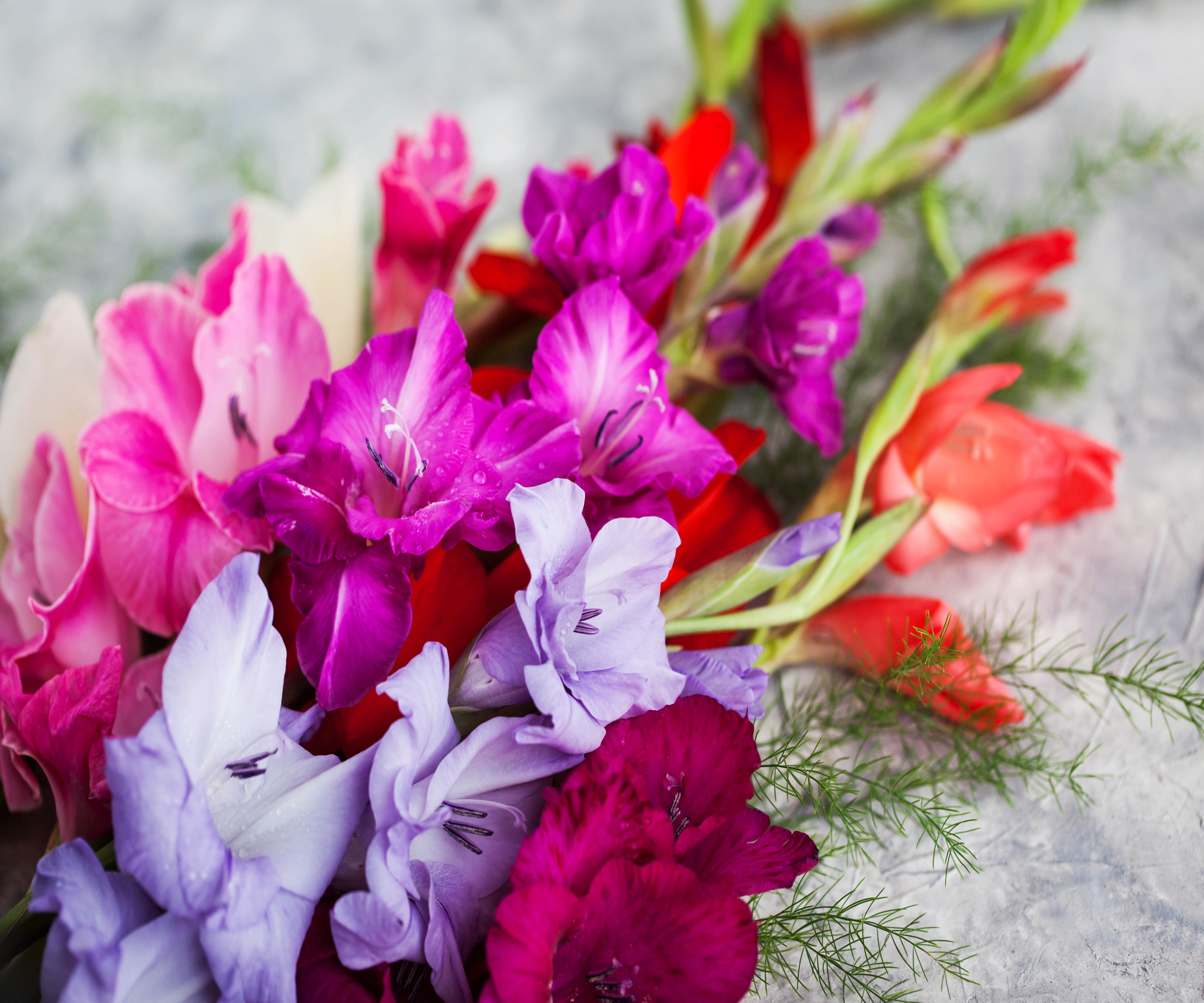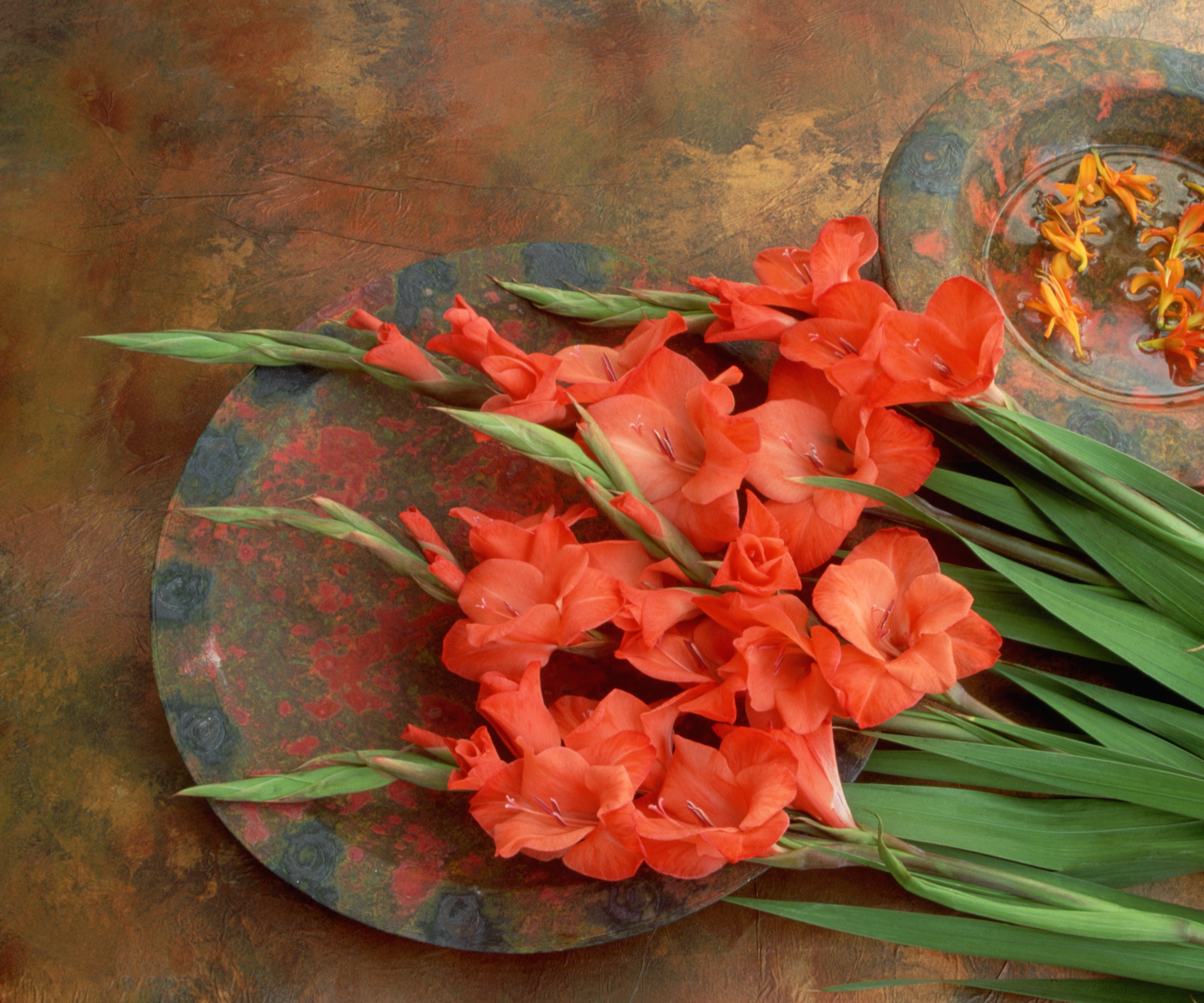When to cut back gladioli – signs to look for and when to wait
If you know when to cut back gladioli, you'll get more year-after-year from these glorious blooms


Learning when to cut back gladioli can make a huge difference to next year's blooms. Time it right and you can enjoy larger, more spectacular flowers. Get it wrong, however, and it can be seriously disappointing.
There are plenty of different types of gladioli to cherry-pick from, whether chosen to bring extra height and drama into your flower bed or as a spectacular addition to your container gardening. From the shorter and more delicate early-flowering varieties to the tall, blowsy hybrids, there’s a sword lily for every garden style and personal preference.
One of the best summer bulbs, the secret to keeping these backyard beauties in tiptop condition is to know how to plant gladioli bulbs, when to plant them, and – crucially – when to cut them back.
When to cut back gladioli


Knowing the best time to snip off fading flower stems and leaves can make all the difference to the size and quality of future flowers. While it may be tempting to tidy up the spent leafy foliage straight away after flowering, resist as this part of the plant still has an important role to play.
Peggy Anne Montgomery, a horticultural professional representing Dutch bulb growers, Dutch Royal Anthos, explains: ‘Gladioli flower stems may be cut back to the ground with pruning shears when all the flowers have faded. Some people like to pinch off each bloom when it fades, but this is not strictly necessary. Do not cut back the foliage until they die and turn yellow at the end of summer. The plant needs them to nourish the corm for the next season.’

Peggy Anne is a horticultural professional with more than 30 years of US and international experience in garden marketing and communications. An account executive for the Garden Media Group, she currently represents Dutch Royal Anthos, a trade organization for Dutch bulb growers and exporters in the US and Canada.
The ideal time of year to cut back gladioli
Not sure of the best time of year to cut back gladioli? This can differ depending on where you live. Olivia Morgan from Glad-A-Way Gardens, one of the only cut flower gladioli farms in the US explains: ‘Cut garden glads back in the early fall, when leaves begin to brown or after the first frost. In moderate winter temp areas, leaving bulbs in-ground all winter will allow the bulbs to grow and potentially multiply for the next season. If planting in cooler zones, dig up corms in late fall and store cold and dry until replanting in the late spring for summer blooms.’
The best time to cut back gladioli grown for cut flowers
Brilliant cutting garden flowers, gladioli look just as spectacular in the vase as they do in the border. Olivia Morgan offers this advice for harvesting and cutting back these blooms: ‘Since glads are the official flower of August, they naturally grow and peak during the hottest days of summer. They love high temps and bright light, so plan to harvest your home-grown glads all summer, potentially earlier in the south than locations in the north. Cut the stems as long as possible, leaving a long ‘foot’ to hold the florets high.’ The foliage can be left to die back naturally, before being cut back or the whole corm lifted and either stored or discarded.
Design expertise in your inbox – from inspiring decorating ideas and beautiful celebrity homes to practical gardening advice and shopping round-ups.

Olivia is the Sales Manager at Glad-A-Way Gardens, Inc. one of the only gladiolus growers in the US. With a keen ability to pair people with plants and a degree in Horticulture, she enjoys coupling her professional horticultural training with her zeal for gardening and floral design. Having worked extensively in the greenhouse and cut flower industries she thrives on bringing consumers closer to plants and flowers through creative marketing and sales programs.
FAQs
How far down should I cut down gladioli?
Removing gladioli foliage after flowering is all important for maintaining the health of the corm (flower bulb). Cut the leaves and stem down to 1 or 2 inches (2.5-5cm) above the neck and either mulch with bark chippings if leaving in the ground or lift and dry store.
Should gladioli be cut down for winter?
While it is important to cut down all gladioli foliage before the colder months take hold, do it too early and you risk starving the corm of all the energy it needs before growing again. Wait until the leaves turn yellow and wilt at the end of the season - usually late summer, early fall - and remove at the base using pruners or shears.

Operations Manager at Holland Group, managing the customer service department and purchasing. I have been in the green industry since 2005 in the Greater Milwaukee area, earning my degree in Horticulture in 2008. I have been able to share my love for plants working in multiple garden centers, in sales positions and most recently in an online retail platform at Holland Group.
You don't have to cut back gladiolus for winter, however.
‘If the gladiolus are planted in zones 8+, they can remain in the ground over winter,’ explains plant expert Katie Sunderlage. ‘If winters are mild, zones 6-7 can sometimes successfully keep the corms in the ground provided they have added some mulch to the top layer of the planting area and they are planted near a structure to provide extra protection.’
If you live outside these areas, treatment is somewhat different. Katie continues: ‘For climates outside of these zones, the corms will need to be removed from the ground and stored over winter. To successfully remove and store the corms over winter, once the leaves have been cut back, they can be carefully dug up from the ground. Remove as much of the soil as possible and dry them in a warm location before storing. Once they appear dry, they can be stored in a cool, dry, dark location. They should not be allowed to freeze during their dormancy period.’

Journalist Jill Morgan has spent over 20 years writing and editing gardening, interior and property features. Titles she has worked on include The English Home, House Beautiful, Ideal Home, Houzz and Modern Gardens and she writes regularly for H&G as a Contributing Editor. Whilst she is a dab hand at renovation projects and DIY, she is happiest when out digging in the garden or planning a new border.